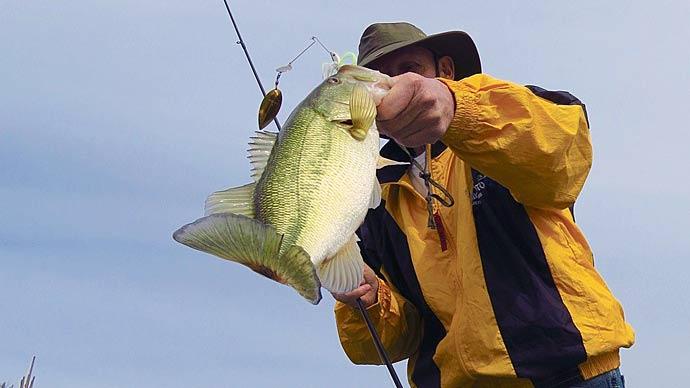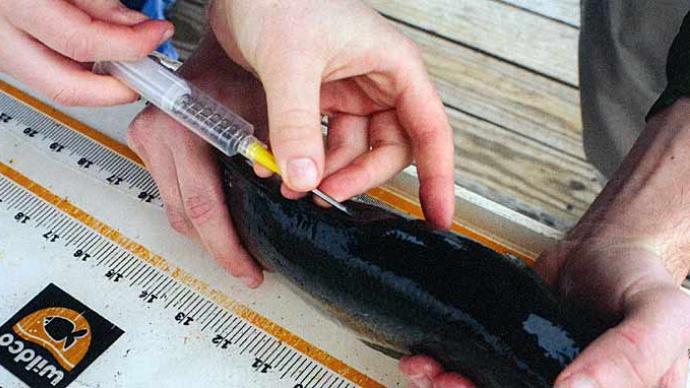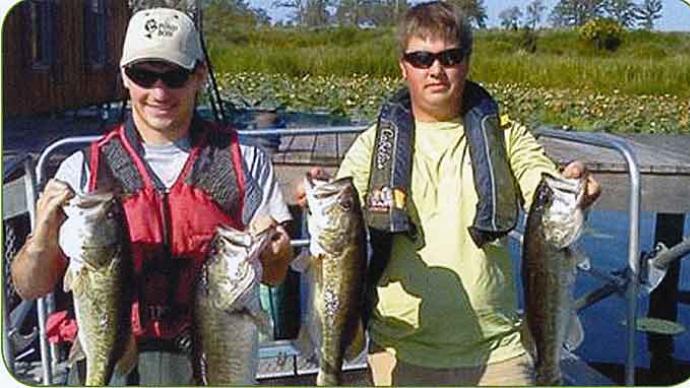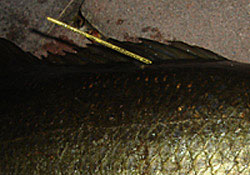
Have you ever asked these questions while fishing your favorite lake, "Didn't I catch this same bass recently over on the other side of the lake? Boy, I wonder how fast the bass are growing here? Can I somehow determine bass movements within the lake? Are the structures I put in my lake attracting bass?" By tagging bass, many of these questions can be answered. Better than that - it turns out it's an extremely fun, easy, and exciting way to spice up your fishing experience.
There are many types of fishing tags out there today. Plastic-tipped dart tags are excellent for bass tagging. These tags are applied on bass using a stainless-steel applicator. The applicator is hollow and will hold one plastic dart tag. The applicator is then used to pierce the bass near the top fin and "hook" the tip around the spine of the fin inside the bass. Plastic-tipped dart tag systems are easy to use and less expensive when compared to other tagging systems. Plastic-tipped dart tag systems are also highly reliable and less intrusive to the bass than other tagging methods.
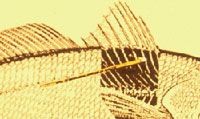
One company, FishTagger, supplies plastic-tipped dart tags imprinted with a unique number (called a Tag ID) and their website address. If a bass is caught by an angler with one of those tags, the angler will see the website address and the unique number (Tag ID) on the tag. The angler can visit the website and add to the bass tag history.
Most fish tag suppliers will only sell their various tags and applicators at high volumes (such as a minimum order of 1000 tags). FishTagger is focused on only supplying the bass fisherman. Their tagging kits contain as low as 20 tags with an applicator. This way you do not need to buy in bulk while still receiving quality tags at a reasonable cost. Also if you purchase their kits, you automatically can use their free website for recording and managing your tagged bass.

Nothing is more exciting than catching a bass and seeing it has been tagged. It is even more interesting when you go back to the website and review the bass tag history. The angler can review all information about this bass such as previous catch dates, lures and baits used, catch locations, bass sizes and weights.
Visit FishTagger.com www.fishtagger.com to learn more about bass tagging. Remember to research and comply to any country, state, and local wildlife regulations regarding tagging and releasing fish.

Tom Huben is the 37 year old owner of FishTagger (www.fishtagger.com). Tom has been a bass fisherman his entire life. He has been providing fish tags and the website technology to support recording fish tags. Tom is a computer engineer and web designer with a passion for largemouth bass fishing. You can reach Tom at contact@fishtagger.com.

